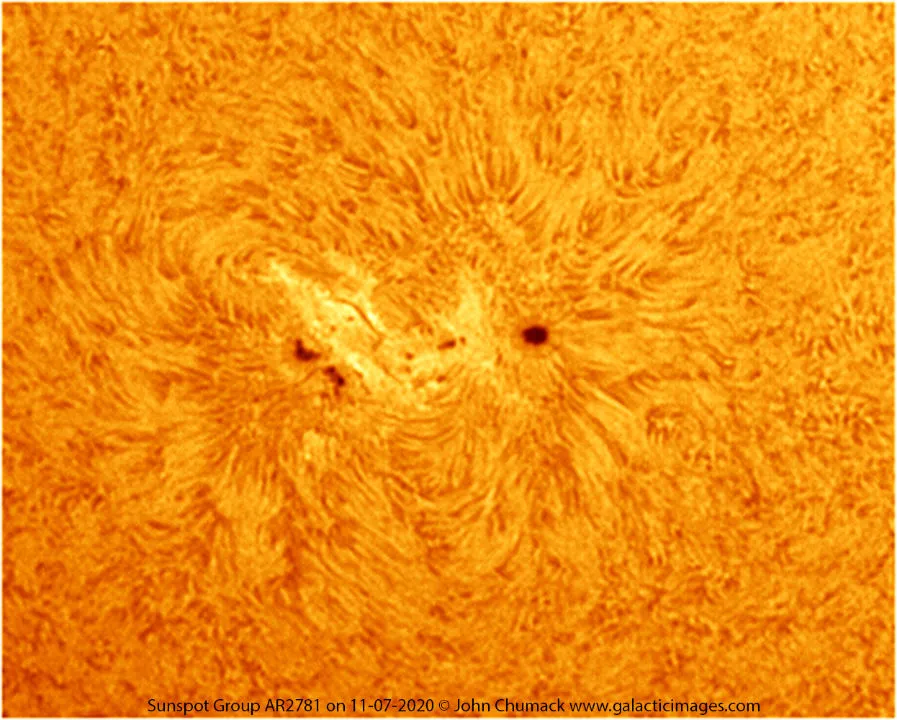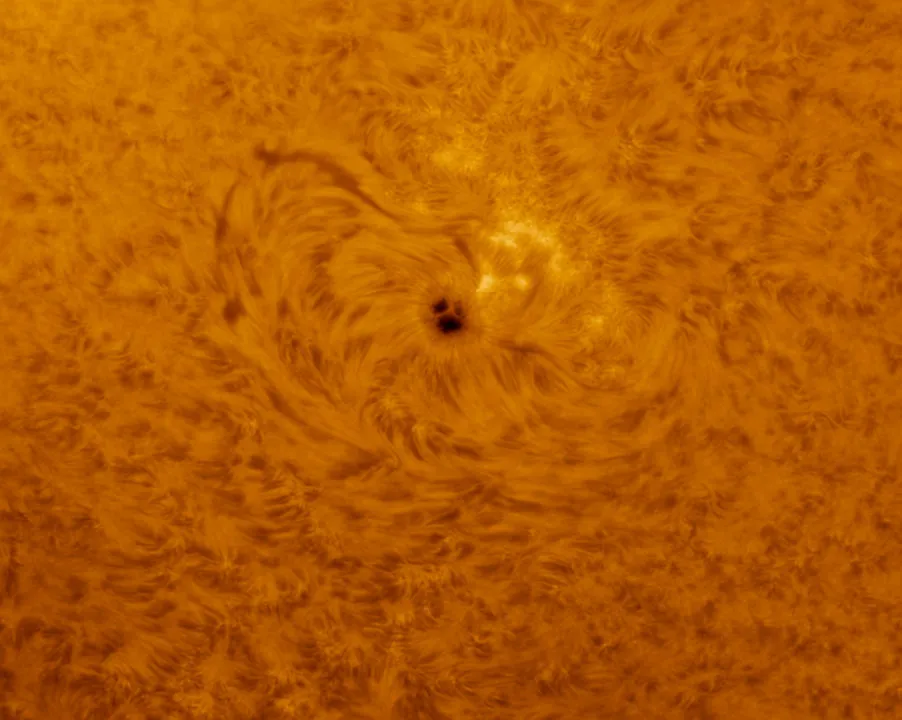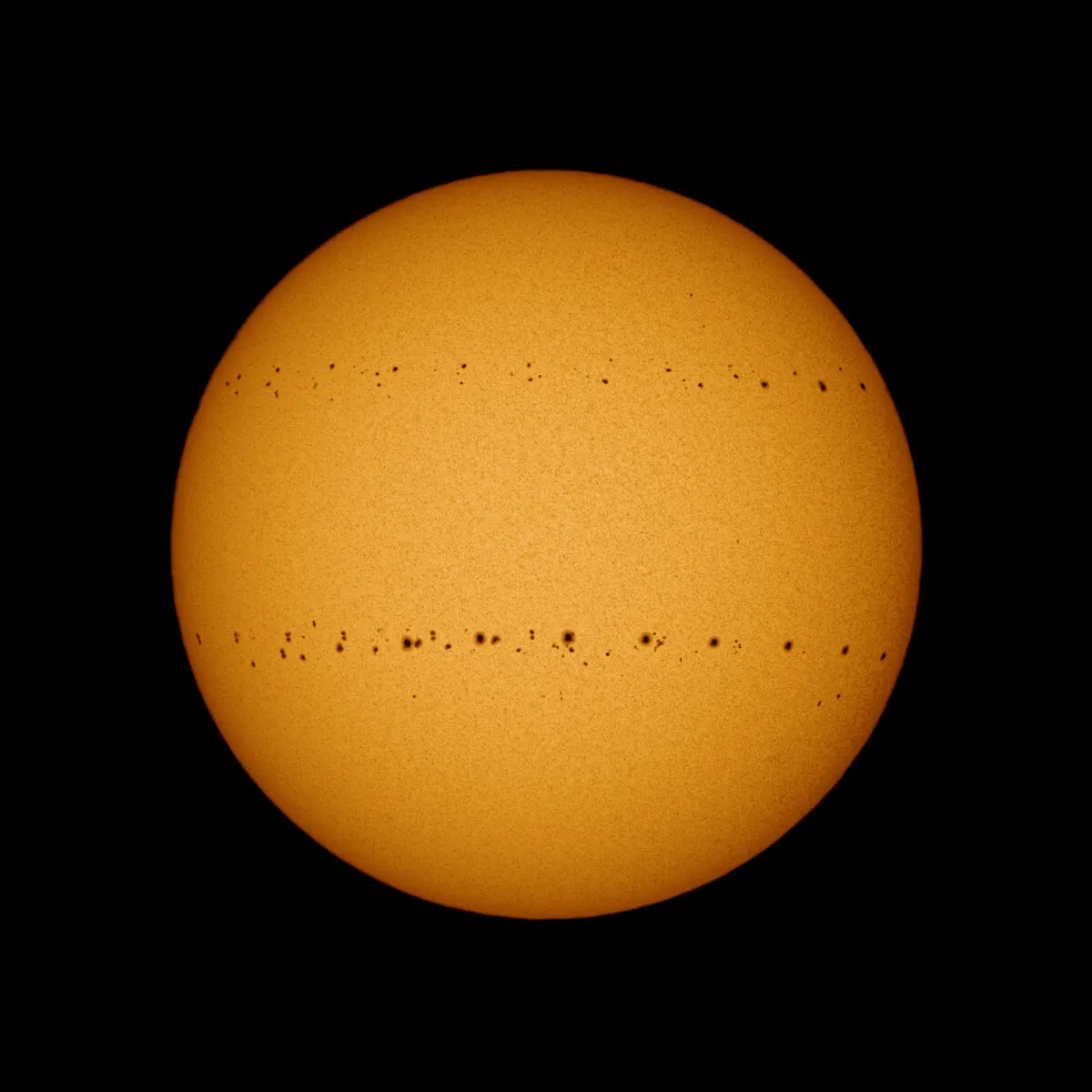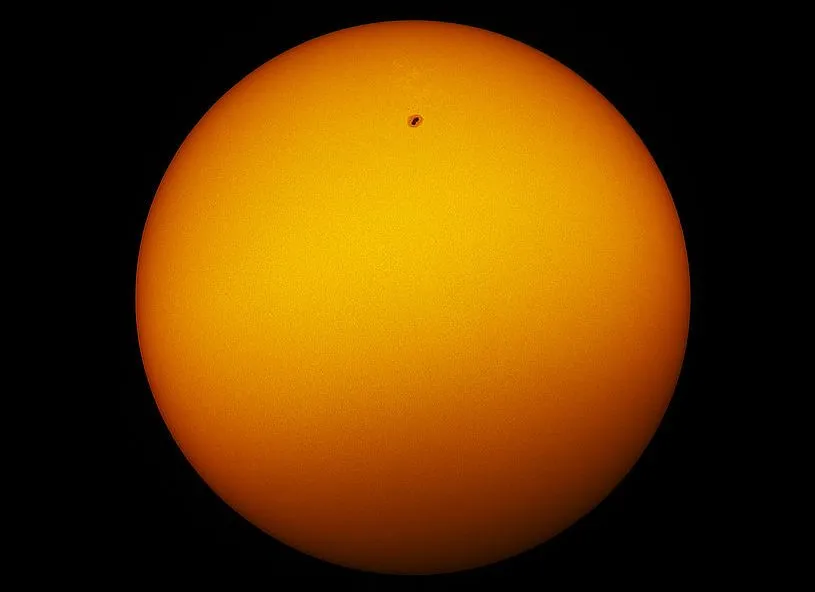Sunspots are regions on the surface of the Sun that appear dark because they are cooler than the surrounding area.
Typically a sunspot will have a dark inner core known as the umbra, and a lighter surrounding region named the penumbra
Sunspots are just one feature visible on the dynamic, ever-changing surface of our host star, which is affected by the movement of gases and the twisting and tangling of the Sun’s magnetic field.
The Sun goes through very quiet periods and then becomes very active, with lots of activity visible on the surface including solar prominences, solar flares and sunspots.

Solar activity rises and falls in regular peaks and troughs that occur roughly every 11 years. This is known as the solar cycle.
Sunspots form due to disturbances in the Sun’s magnetic field. At these regions, the magnetic field is much stronger, causing an increase in pressure.
This concentrated magnetic field prevents hot gas from within the Sun rising to the surface and escaping, causing the region to be much cooler.

Whereas a sunspot might have a temperature of around 3,500°C, for example, the surrounding area could be around 5,500°C.
A sunspot might only last days on the surface of the Sun, or may be visible for weeks or even months before disappearing.
They also appear to move across the face of the Sun, and many astrophotographers love photographing them and tracking their movement.

Sunspots can be as wide as Earth, and but they can also be much larger, even as wide as 100,000km.
Tracking sunspots is a good way for solar scientists to decipher whether the Sun is reaching minimum activity and quietening down, or whether it is approaching peak activity.
If you'd like to do this yourself, read our guide on how to observe sunspots.
Sunspots may also affect life on Earth. Powerful ejections from the Sun known as solar flares occur near sunspots, so more active sunspots could mean more solar flares, resulting in geomagnetic storms.

These storms often mean an increase in aurora activity, or even potential disruption of satellites and communication systems.
The largest sunspot ever recorded was observed in 1947 and was three times as large as sunspot AR 12192, which was observed in 2014 and was about 80,000 miles across.
For more help on safe solar observing and photographing, read our guide on how to observe the Sun or how to photograph the Sun.
And if you are a solar photographer, don’t forget to send us your images or share them with us via Facebook, Twitter and Instagram.

